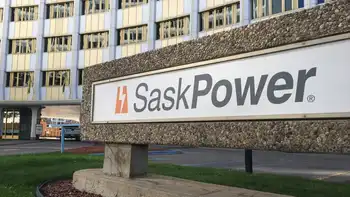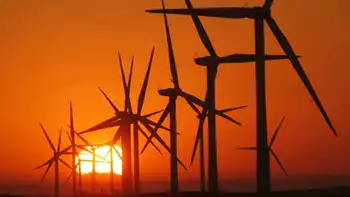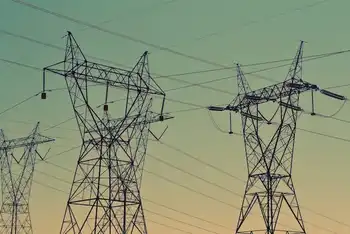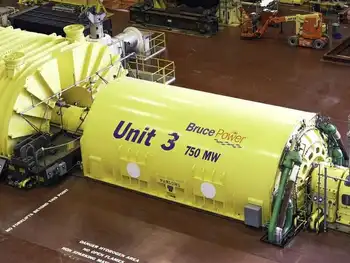Producing fertilizer from the wind
By Associated Press
Protective Relay Training - Basic
Our customized live online or in‑person group training can be delivered to your staff at your location.

- Live Online
- 12 hours Instructor-led
- Group Training Available
Minnesota researchers have designed a $3.75 million carbon-free system that uses wind power from a towering turbine to produce anhydrous ammonia, a common nitrogen-based fertilizer.
It's a perfect supply-and-demand match, as the region has no shortage of wind and U.S. farmers use millions of tons of fertilizer, said Michael Reese, director of the University of Minnesota Renewable Energy Center at Morris.
The test plant will produce fertilizer for use on university farmland. But those working on the project say a similar system in which fertilizer is produced and sold nearby could contribute to the local economy.
It also would take advantage of the region's wind potential while skirting that industry's main hurdle of needing expensive transmission lines to ship electricity east to the urban areas that need it, Reese said.
"Rather than put that investment in transmission lines, why don't we put that investment into an energy intense industry in rural areas where this renewable energy is at?" he asked. "It seems like kind of a no-brainer to me."
The venture would again make anhydrous ammonia a renewable commodity, which it was until the 1950s and 1960s.
Fertilizer production in the early 1900s was powered primarily by hydroelectric dams, but companies scrapped that method after realizing they could make it more cheaply using natural gas.
Anhydrous ammonia is stored in pressurized tanks similar to propane, and it can be applied directly to fields or used as an ingredient in other nitrogen fertilizers. It's shipped to farmers through a network of pipelines, railcars and tanker trucks.
The U.S. is the largest importer of fertilizer in the world, with more than half its nitrogen coming from overseas. The country imported about $1.4 billion worth of anhydrous ammonia in 2009, or 6.1 million U.S. tons, according to the U.S. Department of Agriculture.
Construction on the Morris plant has already started, and it should produce fertilizer by the end of the year.
The plant will use surplus energy generated onsite by a 1.65-megawatt wind turbine that already helps power the nearby campus.
The system creates fertilizer by using an air separation unit to pull nitrogen from the air, while the turbine powers large electrolyzers that separate water into hydrogen and oxygen. The nitrogen and hydrogen are then synthesized into anhydrous ammonia using a century-old chemical process called Haber-Bosch.
The technology is proven, and using wind to power the electrolyzers instead of natural gas makes it a carbon-free process that releases no greenhouse gases.
The question is whether a renewably produced fertilizer can compete in the market. At the current price of about $500 a ton, that would be difficult. But if prices return to the near-$1,200-per-ton range seen a couple of years ago when natural gas prices spiked, "then sure, I believe it would work," Reese said.
Such price jumps are tough on farmers.
The 2008 run-up was followed by a sharp drop, but many farmers had already locked into high prices for the spring and couldn't take advantage of that, said Mark Fiscus, location manager of the Heart of Iowa Co-op in Story City, Iowa. Farmers now are benefiting from the lower costs, he said.
"They've settled down kind of into a midrange in which guys can at least plan a little better now," he said. "There's still some fluctuation."
One of the big impediments to a profitable wind-to-fertilizer system is the electrolyzer, said John Holbrook, an ammonia expert exploring its use as a motor fuel.
"You've already got one arm tied behind you because those are very expensive and pretty inefficient," Holbrook said.
His company, Richland, Wash.-based NHThree LLC, is working on a new process called solid state ammonia synthesis, which could improve efficiency by bypassing the Haber-Bosch process and the electrolyzer.
As with any commodity, transportation adds to the cost, and the nation's 3,100 miles of ammonia pipelines miss many areas, requiring the use of truck and rail. Producing and using fertilizer locally could help make it more affordable, Holbrook said.
Private companies also are exploring ways to make so-called green ammonia.
San Francisco-based SynGest, Inc., plans to build an $80 million facility about 40 miles west of Des Moines, Iowa, that will produce ammonia fertilizer from corn cobs, and an Oregon nonprofit called Northwest Hydrogen Alliance Inc. is studying the feasibility of storing energy by producing anhydrous ammonia. The idea would be to buy cheap excess hydropower at off-peak times during the spring melt to produce anhydrous ammonia for use as fertilizer or to store hydrogen.











